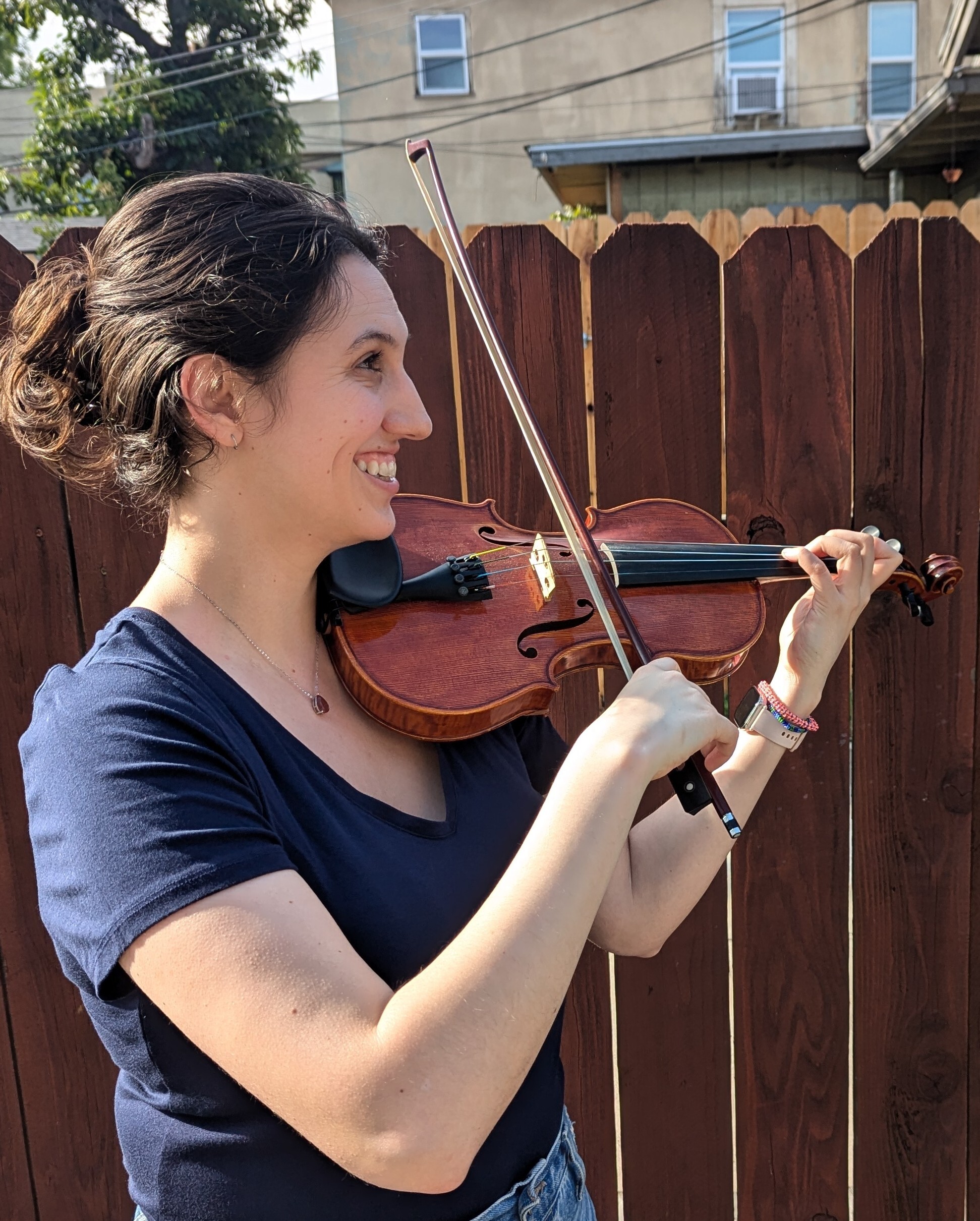
Jul 21, 2025
One day, Mercedes Quintana was working as a freelance violist. The next, she was knee-deep in research at Georgia Tech, chasing down 2,000 lizards.
Finding Rhythm in Computer Science
Quintana started her career in the arts and holds two degrees in musical performance; however, during the COVID-19 pandemic, she decided to switch to computer science.
“I found myself increasingly drawn to computational problem-solving, which led me to pursue the Online Master of Science Computer Science (OMSCS) program with a focus on machine learning,” said Quintana.
She sees a strong connection between her classical music training and the way she approaches computer science.
“When I learn a new piece of music, I break it down into manageable parts and iteratively improve on difficult sections,” said Quintana. “That process mirrors how I debug code or work through complex computational problems.”
A Virtual Lab with Real-World Impact
After completing a research internship analyzing earthquake data, Quintana was inspired to make a real-world impact.
Through that internship, I encountered researchers using computation to tackle biological and scientific problems,” said Quintana. “I realized I wanted to work at the intersection of computer science and life sciences.
That realization led her to the Human Augmented Analytics Group (HAAG). Founded by Ph.D. student Breanna Shi, HAAG is a virtual research lab that connects online students with in-person research projects.
Quintana is conducting her virtual research project in the Stroud Lab under the guidance of James Stroud, assistant professor in the School of Biological Sciences.
Cracking the Code of 2,000 Lizards
The Stroud Lab uses lizards to explore how evolutionary processes may underlie broader patterns of biological diversity.
“It’s a surprisingly large-scale effort. The lab needs to catch and x-ray about 2,000 lizards a year,” said Quintana. “We mark anatomical landmarks on the x-rays. These markers are used to analyze variations across species to study evolutionary patterns.”
Currently, the process is entirely manual. The goal is to automate it to improve both accuracy and efficiency in biological research.
This kind of automation can transform biological research,” said Quintana. “It saves researchers time, increases accuracy, and frees up bandwidth for deeper analysis. It also lays the groundwork for similar tools to be used in other species, which could advance our understanding of biodiversity and evolution.
Efficiency by Design
Quintana hopes that her work will help ease the burden on field biologists.
“I was surprised by the sheer amount of physical effort that goes into collecting biological data,” said Quintana. “It gave me a much deeper appreciation for how much precision and labor goes into building the datasets I use.”
Automating this process will save the lab months of work.
“Automating tedious tasks can really speed up discovery,” said Quintana. “After completing this program, I hope to continue developing technology that supports and empowers researchers in their work.”
In tandem with the automation work, Quintana is developing a user-friendly interface that will allow biologists without coding backgrounds to use it, an important step for the tool’s long-term adoption.
Design Thinking in the Real World
For Quintana, the experience revealed how fulfilling it is not only to build useful tools, but also to communicate their impact to others. She especially enjoyed collaborating across disciplines to refine those tools based on real-world feedback.
“This process of interdisciplinary collaboration and iterative design has shown me how powerful well-designed technology can be when it’s informed by the people who will actually use it.”
As a musician, student, and researcher, the experience has sharpened Quintana’s problem-solving skills.
“When I’m learning a new piece as a musician, I break it down like a computer scientist would,” said Quintana. “I isolate the tough measures, make them easier, refine them, and integrate them back into the full piece. It’s a structured, almost algorithmic approach, and it reminds me of techniques like boosting in machine learning.”
Making Her Mark Virtually
Her work hasn’t gone unnoticed by those around her.
“Mercedes has proven herself an invaluable asset with her work in conservation technology and human-centered interfaces,” said Shi. “As the founder of HAAG, I’m thrilled to champion Mercedes as a brilliant researcher not only advancing her own project but actively elevating the entire HAAG community. I look forward to seeing what she accomplishes next.”
A New Chapter Begins
Quintana’s career change is a testament to the power of interdisciplinary research and the unexpected ways curiosity, creativity, and technical skills can intersect.
On June 25, Quintana presented her work with WildLabs Community at their monthly variety hour. She is currently preparing for her first publication submission by the end of 2025.